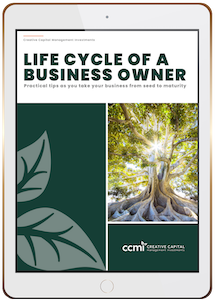Recently, bogus pleas from so-called individual “victims” on social media and crowdfunding sites like GoFundMe have increased, as well as predators looking to take advantage of the good intentions of donors during a disaster, such as the earthquake in Nepal, flood victims in the Midwest or the migrant problems in Europe. Looking at charitable donations as a form of investment and deserving of research prior to giving is a good practice. By doing so, you can be certain your donation will go towards the real mission you are supporting. Below are some ways donors can do their due diligence:
Understand what “nonprofit” means
There are more than 24 types of organizations that are classified as “nonprofit”. Groups other than churches (due to First Amendment protections) disclose broad financial information on tax form 990 (more on that below), which is public information and may even be available online.
501(c) 3 charities are the most common, which include universities, schools, hospitals, and organizations like the American Red Cross.
Private foundations are also classified as 501(c) 3 groups, but generally have fewer donors with bigger influences than public charities. Donations to foundations have greater limits on tax deductions, and often donors’ names must be disclosed to the public.
Be Aware of Confusing Names
Many groups that call themselves foundations are public charities, which make them subject to public charity rules rather than private foundation rules. Political advocacy groups may often have a charitable affiliate (i.e. National Rifle Association and NRA Foundation). Donations to the charity are tax deductible, but gifts to the main organization are not.
Review the tax returns
Nonprofits with more than $200,000 of annual revenue are required to file form 990. Those with less revenue may opt for simplified forms. These forms are available to the public about a year after the end of an organization’s fiscal year, which is a long delay. Below are some key sections you may want to review:
- Part III – Mission and Accomplishments. The IRS has guidelines for what must be reported in this section. If the statement is sloppy or abrupt, it may show they aren’t taking the reporting seriously.
- Part IV, Line 17 – Professional Fundraising. More than $15,000 spent on outside fundraising services must be reported on Schedule G. Though there are requirements, it can be difficult to determine on what projects the money was specifically spent.
- Part IV, lines 25-28 – Related-Party Transactions. Nonprofits are required to disclose any financial transactions between members of the group, family members, and the organization itself. If there are any “Yes” boxes checked, check Schedules L and O for any further details.
- Part V, line 5 – Significant Diversion of Assets. This line indicates if anyone stole a large amount of money from the organization. While “yes” answers are uncommon, they are very important and you can ask the organization about these events.
- Part VIII – Compensation of Officers, Directors, Key Employees, Highly Paid Employees, and Independent Contractors. Nonprofit organizations must report total compensation, benefits, deferred compensation, and auto/housing allowances.
- Part VIII – Revenue. This indicates the sources of funds – via donations, charging for a service, etc.
- Part IX – Functional Expenses. This section details how funds are spent to pursue its mission. However, this is usually not very revealing, as requirements of this section are flexible. Reviewing how expenses in this section have changed over time may provide more helpful information.
- Part X – Balance Sheet. Look at whether the assets decreased over time while liabilities rose to see if the organization is sustainable.
Annual Financial Reports
Many organizations publish annual financial reports in addition to their required IRS form 990. These reports may be audited, which means a CPA firm has verified the information. The 990 is simply signed by the officers or the Executive Director.
Review websites
There are various websites providing analysis for charities, but be aware that their approaches vary widely. For example, Charity Navigator reviews form 990 to develop ratings for organizations, while the BBB Wise Giving Alliance has the charities answer questions. Charity Watch uses sources to determine how efficient an organization is when using donations, and Philanthropedia uses experts to recommend particular charities.
Daniel Borochoff, head of Charity Watch based in Chicago, says “Spending just a little time on research can exponentially increase the good works accomplished by a donation.”
Many of the data points used in this article are from The Wall Street Journal’s “How To Vet A Charity” by Laura Saunders, May 8, 2015.
CCMI provides personalized fee-only financial planning and investment management services to business owners, professionals, individuals and families in San Diego and throughout the country. CCMI has a team of CERTIFIED FINANCIAL PLANNERTM professionals who act as fiduciaries, which means our clients’ interests always come first.
How can we help you?




